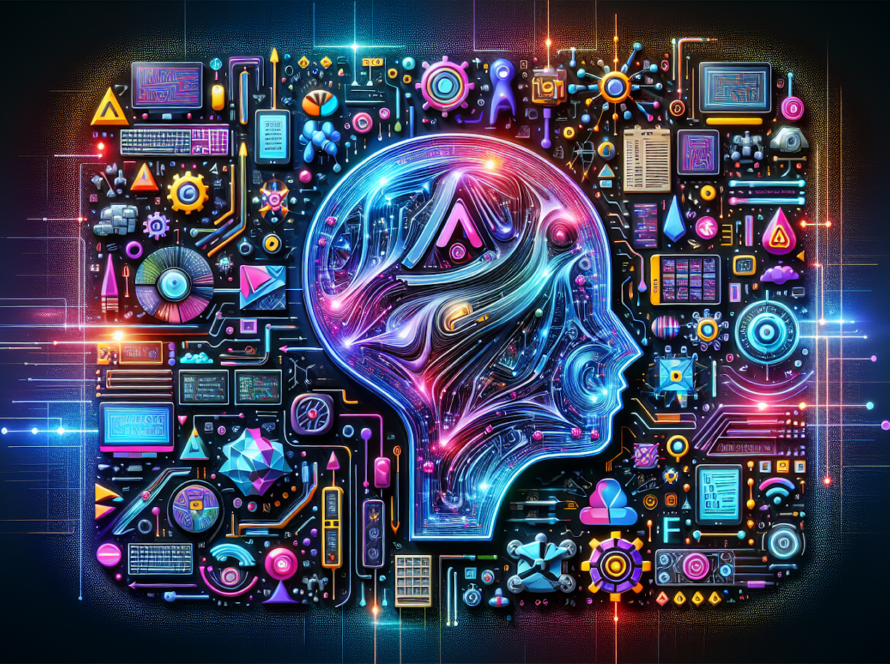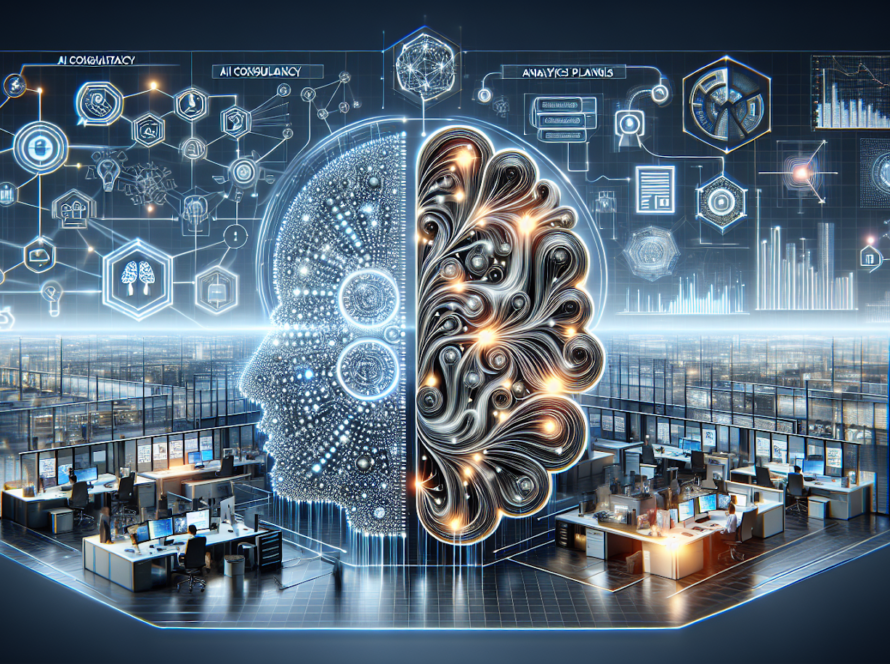If you’ve ever used an AI art generator like Bing’s or ChatGPT’s picture generator, you may have noticed something peculiar about the images they create. The landscapes might be breathtaking, the colors vibrant, and the scenes almost dreamlike in their beauty. But then you notice the people – or more specifically, their hands. They’re often distorted or unnervingly unnatural. And it’s not just hands; numbers and letters can appear jumbled or unreadable. So why is this? Why can’t these advanced AI systems produce accurate representations of such basic human features?
Why Are AI Images So Bad?
In our quest to understand why AI struggles with certain image elements – people, numbers, letters, limbs – we must first delve into how these systems learn to create images in the first place. At their core, AI art generators are powered by complex algorithms that process vast amounts of visual data. They ‘learn’ by analyzing thousands of pre-existing images and attempting to replicate patterns within them.
The problem arises when we consider the diversity and complexity inherent in human anatomy and written language. Take hands as an example: there are countless ways a hand can be positioned or interact with objects. This variability creates a challenge for AI systems which rely heavily on pattern recognition.
Common Issues
AI-generated images often exhibit inaccuracies due to limited training data and the complexity of rendering detailed elements. When it comes to Stable Diffusion Art or other similar technologies utilized by companies like Company ABC, we see that while they can generate stunning abstract visuals or simple objects with relative ease, they falter when faced with more intricate details.
This limitation is particularly evident when generating human figures where proportions need to be precise and consistent. The slightest deviation from what is anatomically correct stands out starkly to the human eye – a testament to our innate ability to recognize even subtle errors in human form representation.
Examples of Poor Quality
You’ve likely seen them before: those distorted faces and hands that seem almost alien in AI-generated portraits. These unsettling artifacts highlight current limitations within AI technology where even sophisticated models struggle with intricacies such as facial symmetry or finger placement.
What Is Wrong with AI-Generated Images?
Anatomical Inaccuracies
The crux of the issue lies in anatomical complexities – especially hands which have been long-standing subjects for artists throughout history due to their expressive nature and mechanical complexity (Futurism). For an algorithm that has been trained predominantly on static images where hands are not always visible or clearly defined, replicating this level of detail becomes a herculean task.
Text Generation Problems
Beyond anatomy, text presents another hurdle for artificial intelligence (Artificial Intelligence Stack Exchange). While humans can easily discern letters based on context even if they’re partially obscured or stylized – think of graffiti or fancy calligraphy – AI lacks this contextual understanding. Consequently, generated images often contain garbled text that bears little resemblance to legible writing.
Why Are AI Images Inaccurate?
Data Limitations
The quality and diversity of training datasets play a crucial role in determining how accurately an AI can generate images (Stable Diffusion Art). If an algorithm has been trained on a dataset lacking diversity in terms of ethnicity, body types, hand gestures etc., its output will reflect these gaps.
Datasets may also suffer from biases present in their source material which further compound inaccuracies when rendering diverse human features (Company ABC).
Algorithm Constraints
AIs operate by identifying patterns but lack true comprehension (Futurism). This means they excel at replicating simple patterns but fail when faced with complex scenarios requiring interpretation rather than mere replication.
In essence, while AIs can mimic what they see in their training data well enough for many purposes – creating realistic representations of nuanced human features remains beyond their current capabilities without significant advancements both in algorithms themselves as well as the breadth and depth of their training data sets.
Bing AI Art Generator: Features and Benefits
When it comes to the Bing AI Art Generator, users are often drawn in by the promise of creating unique and complex images with just a few clicks. This tool leverages advanced algorithms to interpret user prompts and generate artwork that can range from the surreal to photorealistic.
Overview and Strengths
The Bing AI Art Generator is designed to be user-friendly, making it accessible for those who may not have a background in art or technology. Its strength lies in its ability to produce a wide variety of images across different styles and subjects. However, like any AI system, it faces challenges when dealing with the more nuanced aspects of image generation.
Despite these challenges, Bing’s generator has several strong suits. It can create vast landscapes, abstract patterns, and even mimic certain artistic styles with impressive accuracy. The ability to take a text prompt and visualize it into an image is no small feat, showcasing the power of machine learning when applied to creative tasks.
Benefits and Solutions
One of the primary benefits of using Bing’s AI Art Generator is its efficiency; what might take hours for a human artist can be accomplished in minutes. For businesses or individuals needing quick visual content, this can be an invaluable resource.
However, users may encounter common issues such as anatomical inaccuracies or problems with text rendering within images. To address these problems, Bing continuously updates its algorithm based on user feedback and new data sets. Users can also employ specific strategies when inputting prompts—such as providing detailed descriptions or focusing on simpler compositions—to improve the overall quality of generated images.
ChatGPT Picture Generator: Features and Benefits
Overview and Unique Features
Moving onto ChatGPT’s Picture Generator—another popular tool in the realm of AI-generated imagery—it offers unique features that set it apart from other generators. ChatGPT integrates natural language processing capabilities which allow users to input intricate prompts that describe not just the subject but also mood, style, and context.
This integration enables ChatGPT’s Picture Generator to interpret prompts more effectively and attempt to capture subtleties that other systems might miss. However, even with advanced text interpretation skills at play, generating detailed elements like hands remains a challenge due to their complexity.
Addressing Problems
To mitigate some of these issues with detail generation, ChatGPT’s Picture Generator employs sophisticated models trained on diverse datasets aimed at improving how it handles complex image elements. Users are encouraged to refine their prompts by being as specific as possible or by breaking down their requests into simpler parts which can then be combined into a final composition.
This approach not only helps the algorithm understand the request better but also provides clearer guidance on how certain details should be handled within an image. Additionally, ongoing updates to both its linguistic model and visual database help improve accuracy over time.
Frequently Asked Questions
In the ever-evolving landscape of AI and machine learning, users often have pressing questions about the capabilities and limitations of AI in generating images. Let’s address some of these frequently asked questions to shed light on common concerns regarding AI-generated imagery.
Why are AI-generated images often inaccurate?
AI-generated images can be inaccurate due to a combination of factors. Primarily, the training data used to teach the AI may lack diversity or contain biases, which results in a limited understanding of different subjects, especially complex ones like human anatomy or nuanced text. Additionally, the algorithms themselves may not be sophisticated enough to capture the subtleties required for accurate depiction.
What is wrong with AI-generated images?
The issues with AI-generated images typically stem from anatomical inaccuracies and text generation problems. These result from an AI’s inability to understand context and interpret intricate details that go beyond pattern recognition. For instance, hands pose a significant challenge due to their complexity and variability in gestures and positions.
Why can’t AI make a good picture?
While AIs can create stunning abstracts and landscapes, they struggle with ‘good’ pictures involving detailed human features or legible text because they lack contextual comprehension. They are currently unable to fully grasp subtle cues that humans naturally incorporate into their artwork or handwriting, making certain elements appear unnatural or incorrect.
Why is AI bad at generating hands in images?
Hands are particularly difficult for AIs due to their complexity—each hand has multiple joints and can form a vast array of poses. The current training data may not include sufficient examples of hands in various positions or interactions for the AI to learn from effectively. Moreover, accurately rendering hands requires an understanding of anatomy that goes beyond simple pattern recognition.
How do Bing AI Art Generator and ChatGPT Picture Generator compare?
Bing’s Art Generator is known for its user-friendly interface and ability to produce diverse styles quickly. However, it shares similar limitations with other generators when it comes to details like hands or readable text within images. ChatGPT’s Picture Generator sets itself apart with better natural language processing capabilities which allow for more nuanced interpretations of prompts but still faces challenges with complex details. Both tools are continuously being improved as new data is incorporated into their systems.
With this knowledge in hand (pun intended), let’s circle back and consider what we’ve uncovered about why artificial intelligence sometimes misses the mark on our image aspirations. In conclusion, while we marvel at the advances made by artificial intelligence in art generation through platforms like Bing’s Art Generator and ChatGPT’s Picture Generator, it’s clear that there is room for growth—especially when it comes down to capturing the essence of humanity through digits (both numerical and appendage-related) and letters. The journey towards perfecting artificially generated imagery is ongoing; it’s an exciting time where each update brings us closer to overcoming the uncanny valley—a place where distorted limbs no longer haunt our digital creations. So next time you encounter an odd-looking hand or a string of nonsensical characters masquerading as text in your latest AI masterpiece, remember: these are not just flaws but stepping stones on the path toward more intelligent artistry—a path paved by trial, error, feedback loops, and continuous learning. As technology progresses alongside our understanding of both artificial intelligence mechanics and human perception intricacies, we’ll surely see improvements that will one day render this conversation about misshapen limbs obsolete. Until then? We’ll keep asking questions, providing detailed prompts, celebrating incremental improvements—and perhaps finding a bit of charm in those quirky imperfections that remind us we’re still partaking in a grand experiment at the intersection of creativity and computation.



